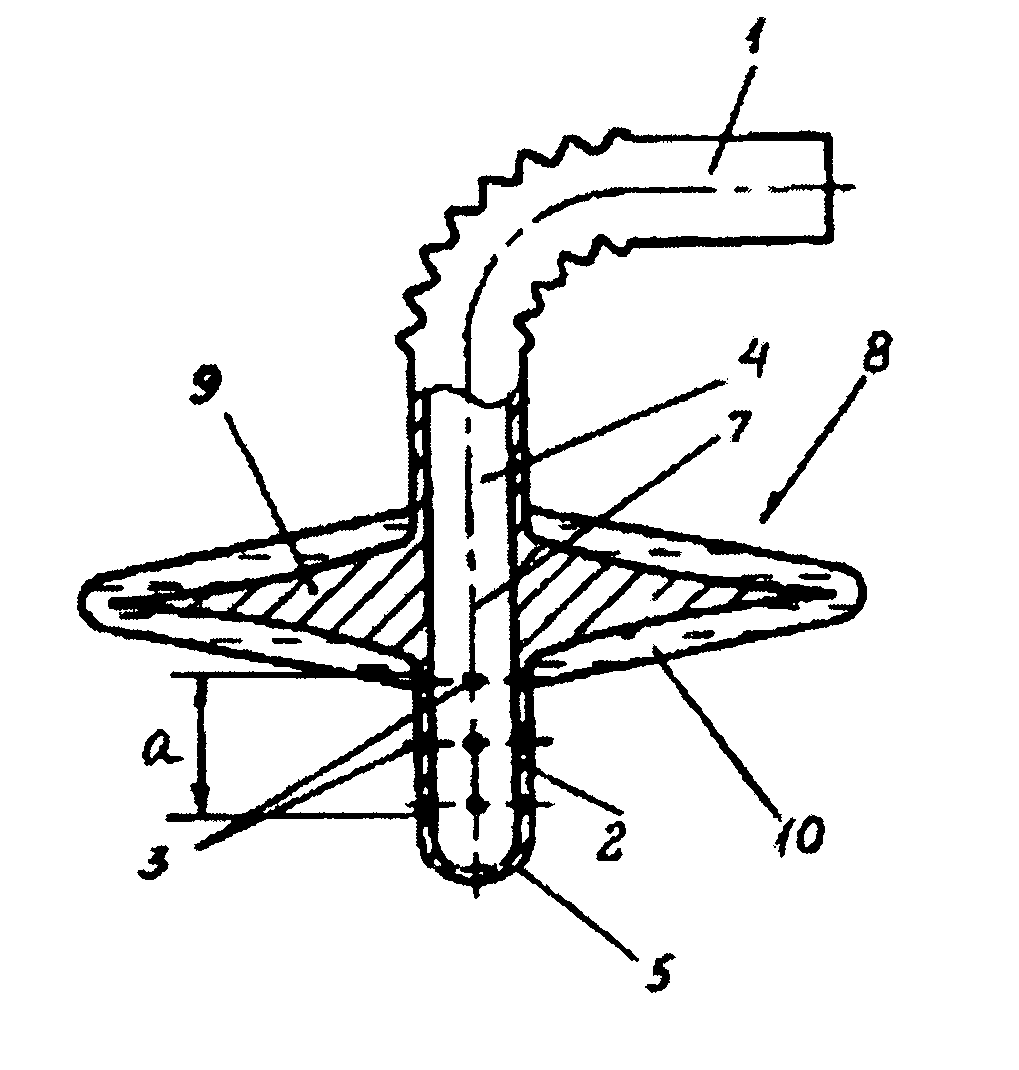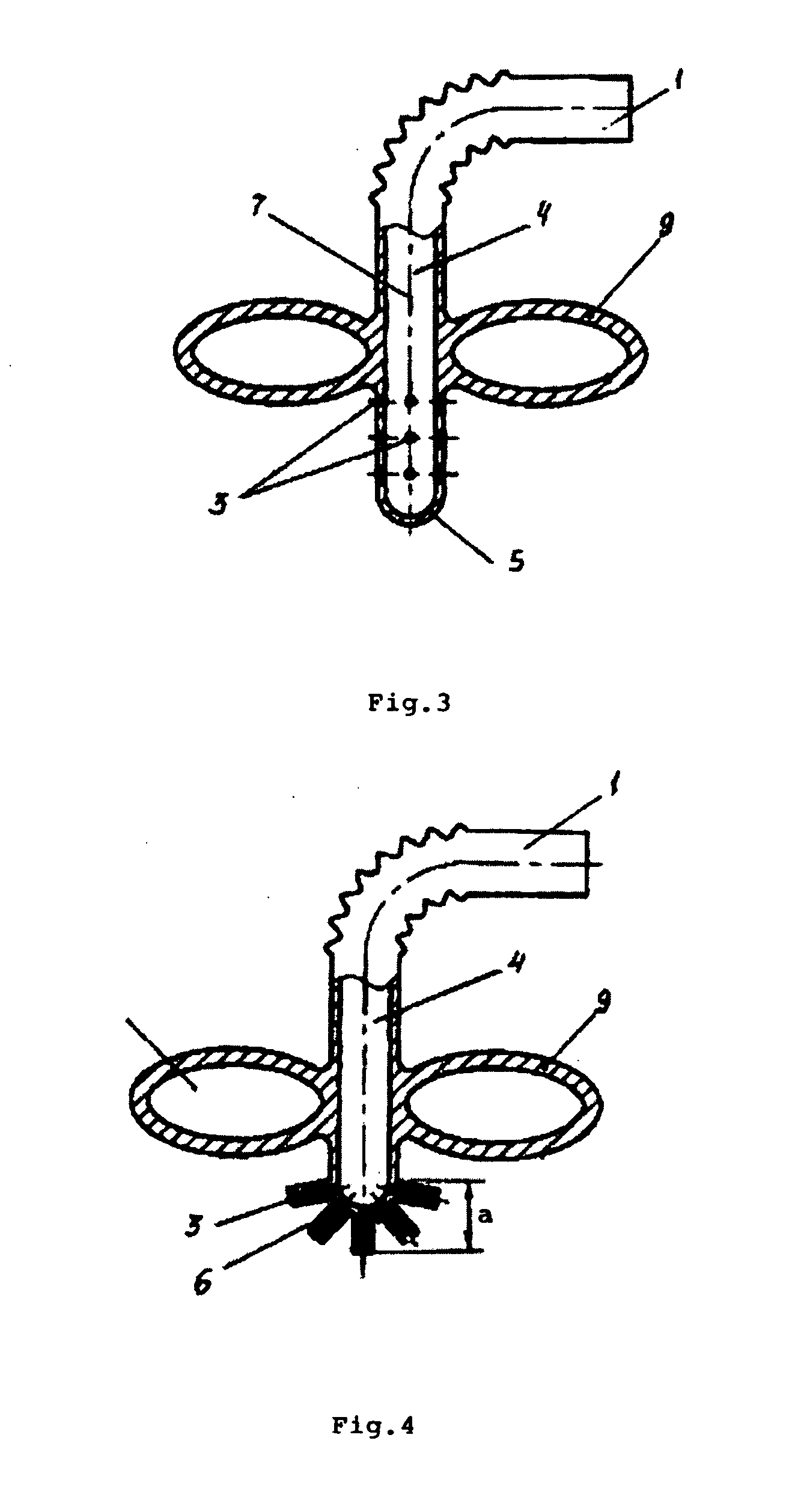[0010]The current invention was designed based on the testing of the activity levels of water by using various types of water to germinate seeds and measuring the required time for the seeds to germinate. Particularly, the water was taken from different depth levels from a container. These experiments showed that water taken at depths of 5 to 15 mm from the surface results in lower
germination rates and therefore is less active. This effect of the “lowered
germination rates” increases up to 1.5 times compared to the previously stated levels if the water is covered with pieces of ice. This effect increases up to 2 times if the top layer of water is taken from a silver container. This effect holds constant for the water taken from the depths of 5 to 15 mm even with lowered levels of water due to previous sampling.
[0013]The experiments described below illustrate the fact that the activity of water depends on the depth of the
water layer that it was taken from. In the table below there is information about the growth of the seeds depending on which type of water was used to germinate them. The number of seeds that germinated is presented as a percentage of seeds that did germinate from the whole. The water for germination was taken from a
glass container from water depths of 1 mm, 2 mm, 5 mm, 10 mm, 15 mm, 17 mm, and 20 mm. There were three types of water used in the experiment: type A—fresh drinking water from a
plastic bottle, poured into a
glass container, type B—the same setup except with the addition of small pieces of ice, type C the same setup as in type A except the water is poured into a silver cup. The water was at
room temperature. All of the seeds were in the different types of water for twenty-four hours at the same
room temperature and
humidity.Table of percents of germination of seedsType of water / depth of water levelABC 1 mm90%60%55% 2 mm90%55%55% 5 mm65%45%35%10 mm55%45%30%15 mm65%50%50%17 mm72%70%60%20 mm75%65%70%Based on the table (based on the percentages of germination) the
water level at the depth of 5-15 mm from the top of the water has the lowest activity levels. Therefore the affect of this water on a
cell will be minimal, thus prolonging the life of the
cell. In addition, it shows that the least
water activity is achieved at the above stated depth levels, when the water is covered by ice and the internal surface of the container is coated with silver. It is important to note that such water conditions are not good for harmful
bacteria to grow in, which adds additional benefits to it when used in drinks. This invention is intended to create a method and devices which will allow for water (or a drink) to be taken from a container in such a way that the extracted water has minimal
biological activity so its affect on the cells of the
organism will be minimal, thus reducing the risk of the
premature aging of cells.
[0014]The purpose of this invention is to propose the
optimal design of the straw to take water from a container from such a depth where the water in the drink has the lowest activity levels. This allows for an increased effectiveness of the body's defenses against a negative effect of the drink on the body's cells.
[0031]Another aspect of the invention suggests to incorporate the above described type device into a large drink storage container used in restaurants, bars or in other
multi user settings. Incorporating above described floating devices to extract drinks from a preferred depth of 5 mm to 15 mm into a larger storage-type drink container will allow for the filling the individual containers (glasses) with the less active water.
 Login to View More
Login to View More  Login to View More
Login to View More 


